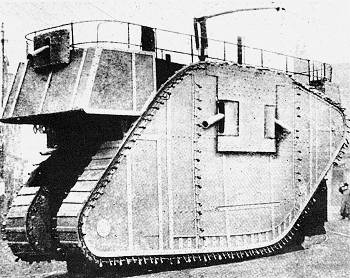

This fascinating postcard was produced by Scarborough-based publisher E.T.W.Dennis & Sons Ltd. for the Committee of the National War Bond Campaign. E.T.W.Dennis was a well-known national postcard publisher for nearly 100 years, having published some of the first ever British picture postcards in 1894-5. The card shows a Scarborough tram (probably 15, the number on the conning tower) decorated as a submarine in support of the town's submarine week, March 4th to 9th 1918. The slogan on the side says "U do your bit", encouraging the public to buy war bonds. The tram is standing in front of the Pavilion Hotel on the short stub terminus at Pavilion square, next to the main railway station.
On the back of the card where the message is usually written is printed this poem by R.A H. Goodyear
ALL ABOARD FOR THE SUBMARINE!
What a test of a town's renown-
To raise one hundred thousand poun'!
But never mind-we're not going to frown:
Every coin that's in the town-
Florin, shilling, or cart-wheel crown,
Nimble tanner and humble "brown,"
Scrape together and plank 'em down!
Cease to fret about margarine,
Forget the butter queue's ever been,
Gather up bank-notes, dirty or clean,
Let your "Bradbury" notes be seen!
They should have asked for an air-machine,
But cheerio! we will show no spleen:
We all love "Jack," so who would be mean?
Scarboro' MUST raise that new Submarine!
War bonds were a 5% interest government bond issued to the public from 1916 onwards, to raise funds for the Great War. Decorated trams like this one were sometimes used as offices where the bonds could be purchased. "Bradbury" notes as mentioned in the poem is a reference to pound (£1) and ten shilling (10/-) bank notes. Prior to the war the only bank notes were for values of five pounds or greater and were issued by the Bank of England. At the outbreak of war the Currency and Bank Notes Act was passed, which allowed the treasury to issue notes from the smaller values to replace the gold sovereigns and half sovereigns then in common use. Permanent Secretary to the treasury at the time was Sir John Bradbury, hence the name. Bradbury was to continue during the war as the government's chief financial advisor.
 Other tramways also operated decorated cars in support of war bonds, perhaps the most notable being Blackpool (left) and Liverpool (below right) who chose tanks as their subject, both photographs from the TLRS Archive.
Other tramways also operated decorated cars in support of war bonds, perhaps the most notable being Blackpool (left) and Liverpool (below right) who chose tanks as their subject, both photographs from the TLRS Archive.
The Scarborough Tramways Company, owned by Edmundson's Electricity Corporation Ltd., operated a 3ft 6in gauge tramway on just under five miles of track. The main route formed two joined circles in the town, with three short branches to the North Sands, South Sands and south to the Spa. The depot was in Scalby Road. The system opened on 6th May 1904.
 Rolling stock consisted of 28 4-wheel open-top cars painted dark red and cream. The first fifteen (1-15) were built in 1904 by the Brush Electrical Engineering Company Ltd., of Loughborough. They had Brush AA trucks, 2 x 35hp GE58 motors and BTH B18 controllers. Three cars (16-18) with identical equipment but with bodies from the British Electric Car Company Ltd., of Trafford Park, Manchester, were also delivered in 1904. Four more cars (19-22) came from Brush in 1905 which again had the same electrical equipment but used the Brush Conaty truck. Finally six cars (23-28) were bought second-hand from Ipswich Corporation Tramways in 1925. These had been built in 1903 by Brush and were on the AA truck but with Westinghouse motors and controllers. At the same time an additional body was also purchased from Ipswich to replace that on car 21 which had been damaged in an accident.
Rolling stock consisted of 28 4-wheel open-top cars painted dark red and cream. The first fifteen (1-15) were built in 1904 by the Brush Electrical Engineering Company Ltd., of Loughborough. They had Brush AA trucks, 2 x 35hp GE58 motors and BTH B18 controllers. Three cars (16-18) with identical equipment but with bodies from the British Electric Car Company Ltd., of Trafford Park, Manchester, were also delivered in 1904. Four more cars (19-22) came from Brush in 1905 which again had the same electrical equipment but used the Brush Conaty truck. Finally six cars (23-28) were bought second-hand from Ipswich Corporation Tramways in 1925. These had been built in 1903 by Brush and were on the AA truck but with Westinghouse motors and controllers. At the same time an additional body was also purchased from Ipswich to replace that on car 21 which had been damaged in an accident.
In 1931 Scarborough Corporation decided to take over the company tramways and close them in favour of motor buses. This occurred with the last tram running on 30th September. Buses were then operated on a profit-sharing basis by the United Automobile Services Ltd.
![]() Go to Postcard Of The Month Index
Go to Postcard Of The Month Index